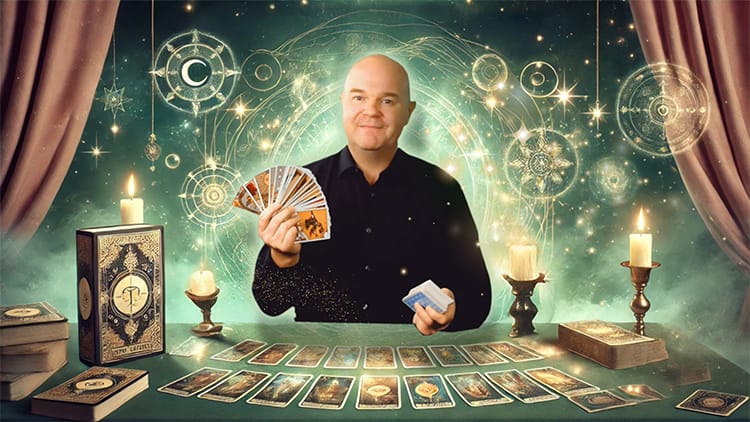How to Read Tarot for Yourself: A Step-by-Step Process
How to Read Tarot for Yourself: A Step-by-Step Process
If you’ve ever wondered how to read Tarot for yourself, you’re in the right place! Tarot can be a powerful tool for self-reflection, offering clarity on your thoughts, emotions, and life situations. But when it comes to reading for yourself, it’s not just about interpreting the cards—it’s about tapping into your intuition and connecting with the deeper layers of your inner world. And the best part? You don’t need to be an expert to get started.
In this post, I’m going to walk you through a simple, step-by-step process for reading Tarot for yourself. Whether you're a complete beginner or you’ve already had some experience with Tarot, this guide will help you approach your readings with confidence and clarity.
1. Set Your Intentions
Before you begin, take a moment to pause and reflect on what you want to focus on during your reading. Are you seeking clarity on a specific situation, decision, or relationship? Or maybe you want a general reading to guide your path forward? Setting an intention for your reading helps you stay focused and guides the energy of the cards.
Take a deep breath, center yourself, and ask yourself, “What do I need to know right now?” This is the perfect time to ask a question or clarify what you hope to gain from the reading.
2. Choose Your Spread
Now that you’ve set your intention, it’s time to choose a Tarot spread. A spread is simply the arrangement of cards that you’ll lay out during your reading. There are many different spreads to choose from, but don’t worry—you don’t need to use something complicated at first. A simple three-card spread is perfect for beginners. This spread can give you insight into the past, present, and future—or, you can use it to focus on your current situation, challenges, and advice.
Here’s an example of a simple three-card spread:
- Card 1: What is the situation or challenge?
- Card 2: What is the energy influencing the situation?
- Card 3: What action or advice is needed?
Once you’re comfortable, you can experiment with larger spreads like the Celtic Cross, but starting small will keep things manageable.
3. Shuffle Your Cards
Shuffling your cards is an important part of the process. It’s not just about mixing them up—it’s about transferring your energy into the deck. While shuffling, focus on your question or intention. Let your thoughts flow, and trust that the cards will reveal what you need to know.
Some people like to shuffle until a card “pops out,” while others prefer to shuffle until they feel ready. Go with what feels right for you—there’s no wrong way to shuffle!
4. Lay Out the Cards
Once you’ve shuffled, it’s time to lay out your cards in your chosen spread. Take a moment to observe the cards before you start interpreting them. What stands out to you visually? How do the colors, symbols, or imagery make you feel? Trust your intuition here. You don’t need to overanalyze it—just notice what catches your eye.
5. Interpret the Cards
Now comes the fun part—interpreting your cards! Start with the first card and work your way through the spread. Here are some tips to guide you:
- Start with the basics: Each card has a general meaning, but it’s important to remember that Tarot is a reflection of your life and energy. Trust your intuition and how the card feels in the context of your reading.
- Focus on the imagery: Pay attention to any symbols, colors, or emotions that arise when you look at the card. Tarot is deeply symbolic, and these images are key to unlocking deeper messages.
- Look for patterns: If multiple cards from the same suit (Cups, Swords, Pentacles, or Wands) show up, this could indicate a particular area of focus (emotions, intellect, material concerns, or action).
- Trust your gut: Don’t worry too much about memorizing specific meanings. Over time, you’ll learn to trust your intuition more. The cards are meant to guide you, not overwhelm you.
If you’re ever unsure about a card’s meaning, take a deep breath and pause. What does it say to you right now? What message does it hold for your current situation?
6. Reflect on the Reading
Once you’ve interpreted all the cards, take a step back and reflect on the reading as a whole. What message or insight stands out the most? How do the cards connect to your situation, and what action can you take moving forward?
Write down your thoughts in a Tarot journal. This is a great way to track your readings, revisit insights, and see how your interpretation evolves over time.
7. Close the Reading
Once you’ve completed your reading and reflected on it, it’s important to close the session. You can thank the cards for their guidance, clear the energy of the deck by shuffling it, or even place the cards back in their storage bag. Just like you began with intention, it’s good to end with gratitude and awareness.
Reading Tarot for yourself is a powerful practice that invites you to explore your inner wisdom. The more you read, the easier it becomes to tap into your intuition and connect with the energy of the cards. Remember, there are no wrong readings—just opportunities for insight and growth.
So, grab your deck, set your intention, and enjoy the journey. Tarot isn’t about perfection; it’s about discovering the answers that already lie within you.

Learn How to Read Tarot with Clarity & Confidence
Unlock the power of Tarot with our step-by-step course! Gain confidence, enhance your intuition, and start reading Tarot with clarity today.

The original official Rider-Waite
Tarot Deck.
72 Beutifully illustrated timeless tarot cards.
Available on
Amazon
